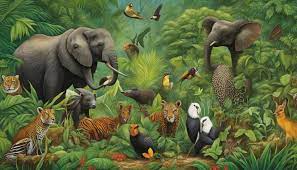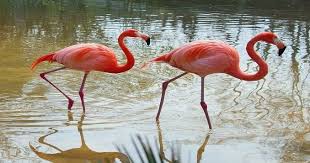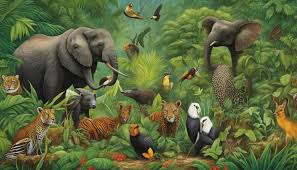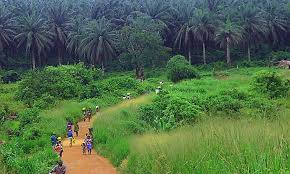Ecosystems differ from one another. These differences can be assessed based on the type and quantity of available vegetation. The vegetation is determined by edaphic factors and the region’s climatic condition. The vegetation cover bears a direct influence on the type and population of animals accommodated within the specific ecological location.
Thus, the species richness in a location is a functional tool to ascertain the status of an ecosystem. This article highlights the biodiversity status in Nigeria, focusing on some indigenous plant species.
Read Also: Poultry Disease Prevention and Management
The Nigerian Ecosystem and Biodiversity

The Nigerian ecosystem is rich in biodiversity as it is endowed with a variety of plant and animal species. These species occur in different numbers within the country’s vegetation that ranges from the mangrove along the coast in the south to the Sahel in the north. Most of the biodiversity sustains the rural economy, and with massive dependence, the rate of depletion increases uncontrollably.
Of the 150 food plants commonly consumed by humans, 115 are indigenous African species. The world’s major regions of crop diversity include the Niger River delta and the humid forest zone of West and Central Africa. Endemism, which is the proportion of species not found anywhere else in the world, is high in Africa, with Tropical Africa estimated at 45%.
Reports indicate that countries in the West and Central African sub-regions have identified many underutilized species that are important to the livelihoods of the local population.
The list of identified underutilized species includes:
i. 7 cereals
ii. 8 legumes
iii. 4 roots and tubers
iv. 8 oil crops
v. 31 fruits and nuts
vi. 17 vegetables and spices
vii. 4 beverages
viii. 38 medicinal plants
ix. 44 genera of forages
These plant groups constitute the food groups used by the Nigerian populace. Reports show that an expanded list of twenty-four indigenous leafy vegetables is commonly consumed in southwest Nigeria. In addition to serving as vegetables and fruits, some plants also serve as sources of traditional medicine in southwest Nigeria, as evident in the usage of the twenty-four indigenous leaf vegetables.
Within the Nigerian ecosystem, there are several species of local bio-products, with regional differences.
Local Species in Nigeria

The Nigerian ecosystem is rich in indigenous biotic components. An index of 7,895 plant species identified in 338 families, 2,215 genera, and 22,000 animal species confirms that the country is endowed with a variety of plant and animal species.
These animal and plant species occur in different numbers within the country’s vegetation, sustaining the rural economy. Exotic species have also adjusted to the climatic conditions, making them part of the biotic community.
Local Species of Cereals
| s/no | Local Cereals | English Name | Local Name | Parts Used |
|---|---|---|---|---|
| 1 | Zea mays | Maize | Akpakpa | Seeds |
| 2 | Sorghum vulgare | Guinea Corn | – | Seeds |
| 3 | Oryza sativa | Rice | Edesi | Seeds |
Local Species of Legumes
| s/no | Local Legumes | English Name | Local Name | Parts Used |
|---|---|---|---|---|
| 1 | Vigna sinensis | Cowpea | Nsama | Seeds |
| 2 | Phaseolus vulgaris | Kidney beans | Okofi | Seeds |
| 3 | Mueona urens | Velvet beans | Ibaba | Seeds |
| 4 | Conophorun tetracarpidum | – | Ekporo | Seeds |
Local Species of Fruit Trees
| s/no | Fruit Trees | English Name | Local Name | Edible Part |
|---|---|---|---|---|
| 1 | Chrysophyllum albidun | Star Apple | Udara | Fruits |
| 2 | Dacryodes edulis | African Pear | Eben | Fruits |
| 3 | Persea Americana | Avocado | Eben mbakara | Fruits |
| 4 | Treculia africana | African Breadfruit | Adian | Seeds |
| 5 | Mangifera indica | Mango | Manko | Fruits |
| 6 | Euginea oweriensis | Apple | Apple | Fruits |
| 7 | Cola argentea | – | Ndiya | Fruits |
| 8 | Carica papaya | Pawpaw | Udia Edi | Fruits |
| 9 | Irvingia gabonensis | Bush Mango | Uyo | Fruit/Seeds |
| 10 | Gareinia kola | Bitter Kola | Efiat | Seeds |
| 11 | Maesobofrya dusenii | – | Nyayatet | Fruits |
| 12 | Synsepalum dulcificum | – | Mkpautuk | Fruits |
These native species may not necessarily represent the entire flora community in Nigeria. There are many other species that may not gain as much popularity depending on their location and usage, but they constitute remarkable components of the floral community.
Read Also: The Ideal Instrument for Debeaking the Birds
Flora and Fauna Diversity in Nigeria

Though Nigeria has vast biodiversity, it is not evenly distributed. Flora and fauna diversity depend on several factors, including climate, altitude, soils, and the presence of other species. This diversity is higher in the tropics than in other localized regions. When a wide diversity of species is maintained, the web of life that sustains all biota is preserved.
Do you have any questions, suggestions, or contributions? If so, please feel free to use the comment box below to share your thoughts. We also encourage you to kindly share this information with others who might benefit from it. Since we can’t reach everyone at once, we truly appreciate your help in spreading the word. Thank you so much for your support and for sharing!

